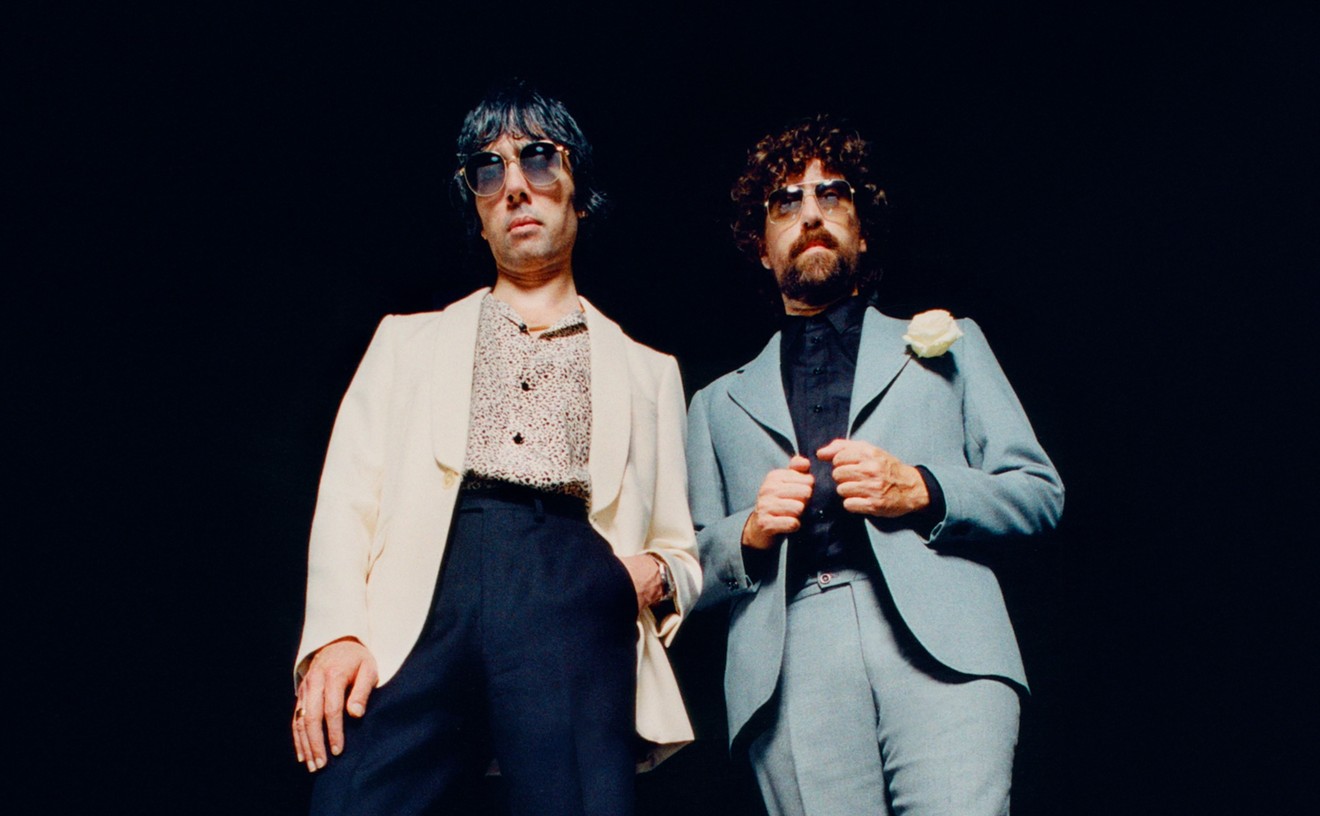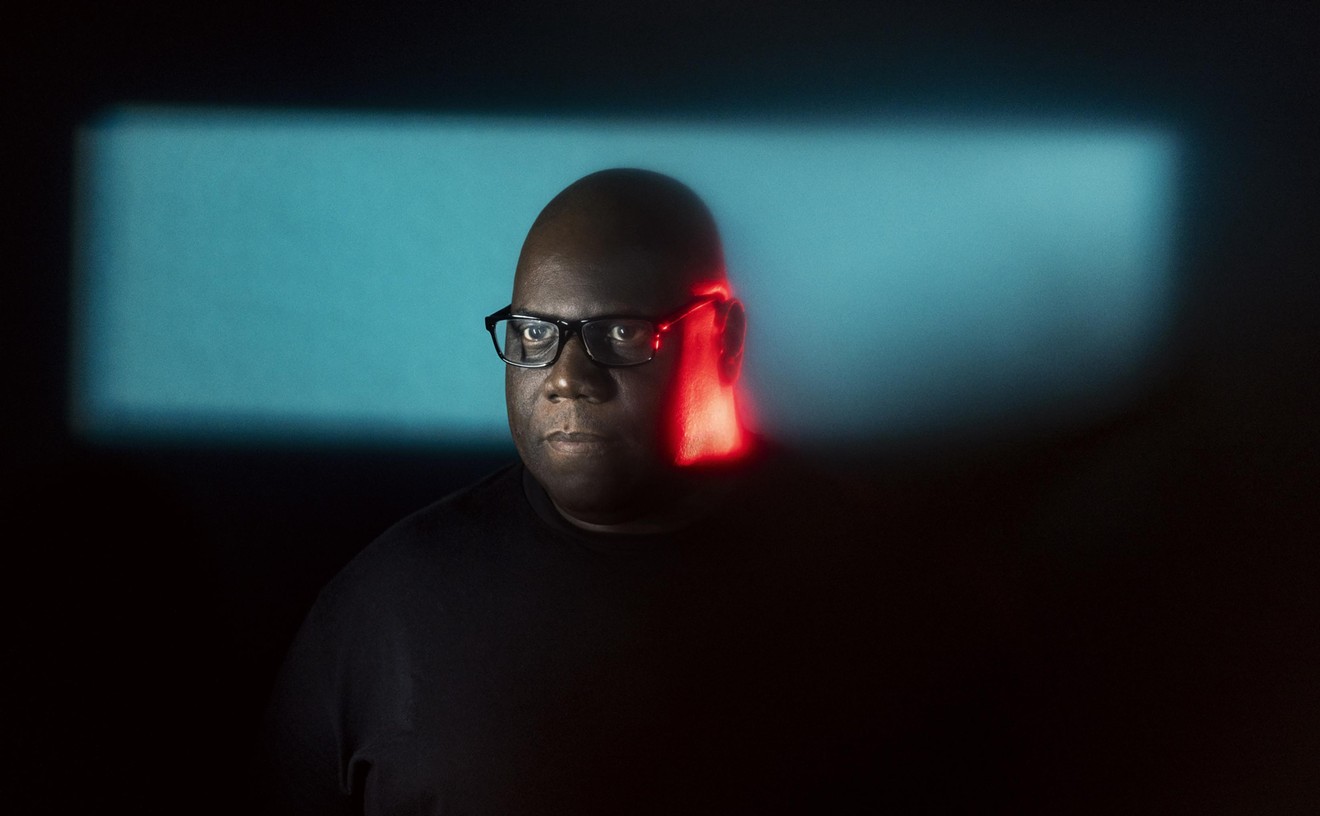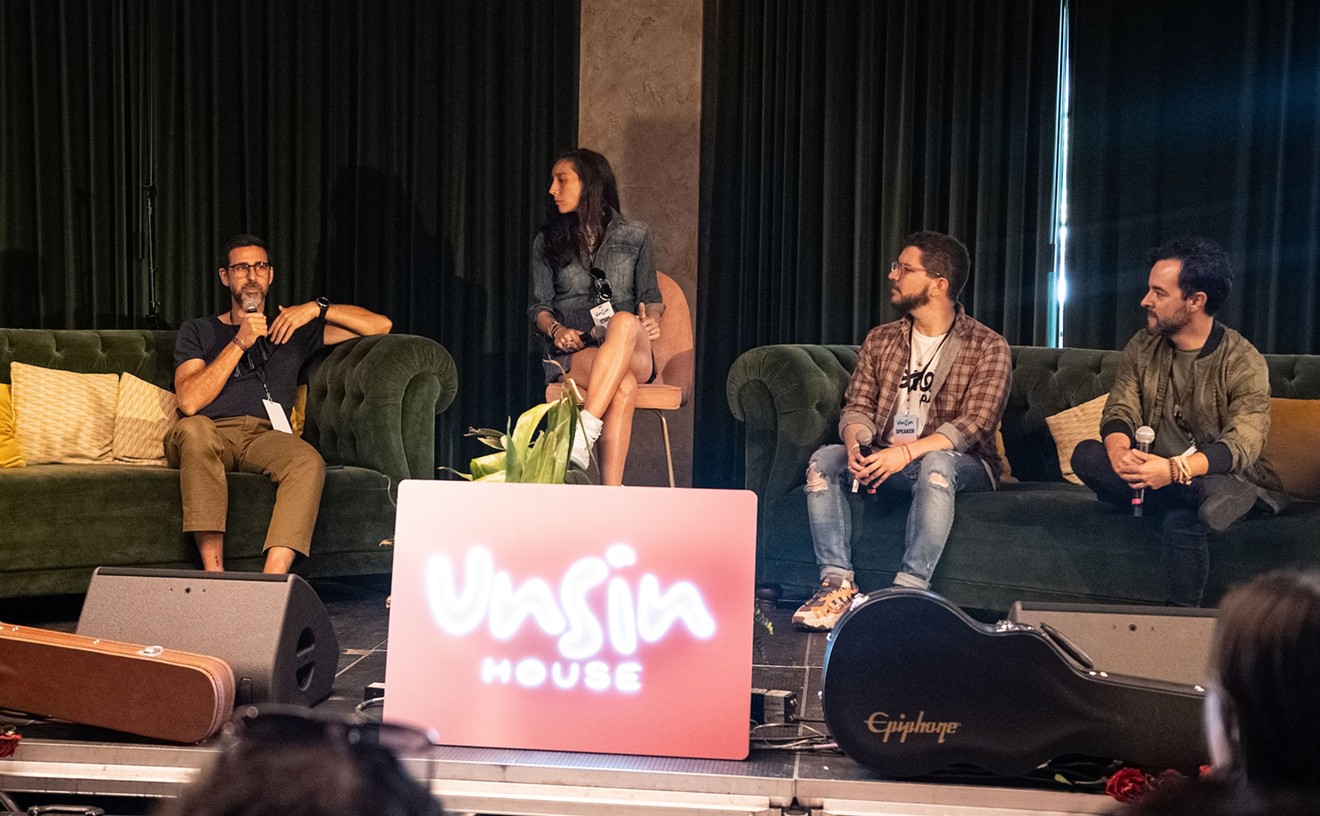Zamora showed up to present Iberian singer Alejandro Sanz with a plaque certifying his latest disc, Alma al Aire (Bare Soul), RIAA platinum. After the flashbulbs dimmed, a stringer from Peru asked Sanz&'s opinion on the reception of his recent concert in Lima. A reporter from Argentina wanted an explanation of glitches with a show in the city of Cordoba. A radio personality from Romance (WRMA-FM 106.7), the station that sponsored Sanz's May 2 show at the James L. Knight Center, gushed over the singer's kind words about the people in every country where he performs. There were representatives from every major Spanish-language talk show made in the United States and from each of the surviving Latin music dot-coms. If the English-language media turns a deaf ear to the blockbuster Spanish import, the rest of the hemisphere is tuned in to Miami, asking questions of the stars who shoot so quickly across the sky back home.
Few artists better illuminate the peculiar position of Miami at the cusp of the Anglo and Latin worlds. Like other Spanish-language performers, Sanz is a regular visitor to the Magic City, hoping to keep his mischievous grin flashing across gossip shows and magazine covers. Last year Sanz recorded Alma al Aire in North Miami at the Hit Factory, the storied former Criteria studios whose rock and roll glory recently was retooled to provide the clean recording required by Latin superproductions. Although the singer-songwriter spent six months in a rented house here, he did not often sally out into the night, showing up a couple of times at Starfish on Miami Beach with his pal, Cuban crooner Pancho Cespedes, but otherwise sticking to business.
"I've been coming to Miami for ten years," announced the impish Sanz to the sold-out crowd at the James L. Knight Center last week. "Promotion and promotion and promotion," he sighed. "Now I finally get to sing." The well-heeled, all-ages audience went wild. "We could loot Key Biscayne tonight," observed my companion. Certainly if any community stands for Sanz's fan base, it is that island haven for monied Latin-American immigrants of a certain education. Sanz, while prone to striking sensual poses for publicity photos and known to show a lot of skin in his music videos, is not of the shake-your-bon-bon school of Latin exoticism. "You are the poet of the ballad," swooned a bare-midriffed Telemundo reporter at the press conference, to which Sanz replied with modesty no less disarming for being obligatory: "No, no, no. I don't think so."
Unlike his hot-and-spicy contemporaries, Sanz follows a long Iberian tradition with little crossover potential: the caballero's rejection of commerce in favor of culture. Despite the fact that Alma al Aire already has gone platinum in 21 countries -- on the heels of the multiplatinum 1997 Mas -- Sanz told New Times recently: "My music is a little sophisticated for any hope of reaching a massive public." Sanz, who confesses that his English is abysmal, is recording an English-language song with producer David Foster. Even translated into English, however, his lyrics, which speak of "hiding behind open doors" and "universes of small things," strike Puritan ears as overly sentimental, without the picante payoff of any hot-tamale sexiness. Onstage at the Knight Center, Sanz never came closer to shaking anything than when he pawed the ground with his feet to accent the rhythm or raised his arms shyly in a teasing approximation of a flamenco stance.
But if Sanz's deliberately cultured sensuality means that English audiences won't come, it hardly matters. By the time the unmistakable first bars of the 1997 monster hit "Corazón Partío" ("Broken Heart") signaled the last song of the night, the Key Biscayne crowd that had been singing along for more than two hours had risen to its feet and gathered on the floor in anticipation. Grandmothers teetered on the shoulders of young women who had been rushing the stage in a steady tide all evening. Fathers and little sisters stood beside them, belting out what may well be the longest and most metaphor-intensive chorus in pop music. "Who is going to surrender her emotions to me?/Who will ask me never to abandon her?/Who will cover me up tonight if it's cold?/Who will heal my broken heart?/Who will fill this January with springtime?/And bring the moon down to play with us?/Tell me, if you leave, tell me, my love/Who will cure my broken heart?"
I can already see the English speakers wince, and not just because of the bad meter and rhyme scheme of my cursory translation. But nearly everyone in the house at the Knight Center, myself included, sang the words over and over and over again, as will the audiences at Radio City Music Hall and every other concert venue Sanz sells out. Such sentimiento might never cross over. But who cares? As Sanz points out: "I have to be free to make the music I like and not always be at the mercy of my bank account."










